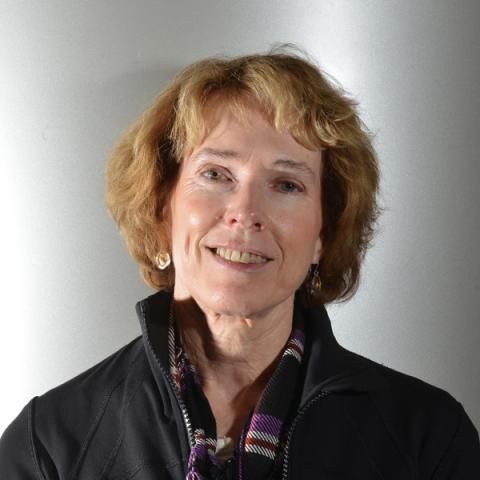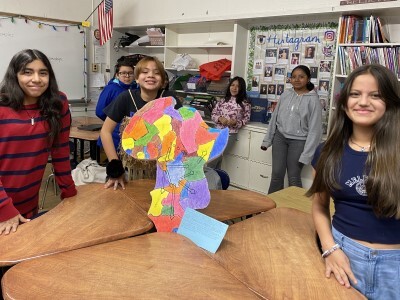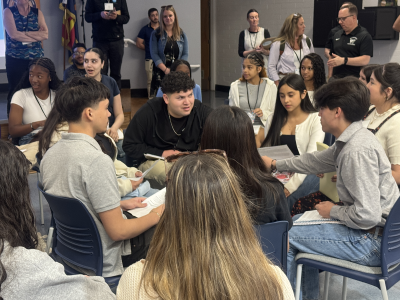And the Winners of the Breakthrough Models Academy Competition Were…All Twelve Teams
Topics

Educators are the lead learners in schools. If they are to enable powerful, authentic, deep learning among their students, they need to live that kind of learning and professional culture themselves. When everyone is part of that experiential through-line, that’s when next generation learning thrives.
Twelve Breakthrough Models Academy teams culminated their work to create innovative designs for enhanced student success by presenting the designs publicly at the EDUCAUSE Annual Conference.
CloudU … ClassMob … U.Belong … WIL Academy … MapEd … Silicon Valley ed-tech startups, perhaps? In fact, these –and five other designs—are creations of the change agents who emerged from the first-ever Breakthrough Models Academy. The intriguingly titled projects don’t exist in finished form, but they live in the minds of their creators—and, as of last week, in the minds of many who encountered them in the Breakthrough Models Academy competition session at the EDUCAUSE Annual Conference in Anaheim. They debuted last Thursday in a glassed-in area on the bustling exhibit floor that just managed to contain the energy of twelve innovative teams and their projects. The projects were initially sketched out during the residential segment of the Breakthrough Models Academy, an intensive week in Cambridge, MA last July.
Inspired by NGLC’s Breakthrough Models for College Completion, the inter-institutional teams collaborated remotely throughout August and September, with support from coaches Tom Cavanagh, Shelli Fowler, and Roger Yohe, to create detailed project plans and media to introduce their designs to the world. At EDUCAUSE 2013, the teams offered poster-style presentations in the course of a two-hour session, attended by anyone interested – which proved to be a large, inquisitive, and lively group of conference attendees. The judges of the competition, who evaluated the designs in advance, were incognito during the poster session. The judges’ ratings determined the three project teams selected to receive cash awards. But every one of the designs was a winner--they each represented a collective vision for innovation using technology to improve student success.
The projects all strove to meet strategic goals, both for students and for the competition, as exemplified by four of the projects:
U.Belong: While higher education’s institutional mission has always included preparing students for life after graduation, the economic reality for current graduates dictates that they be prepared for multiple jobs and changes in the skills required. The thousands of jobs that go unfilled demonstrate that universities have not as yet been able to produce graduates with 21st century workplace competencies at the level our economy demands. Trevor Davis, Danna Gibson, Tacy Holliday, and Phillip Neufeld envisioned U.Belong as a student-centered initiative addressing this shortfall, connecting students with each other, community resources, and educational institutions to improve their collective abilities to navigate the transition from college to career. See the U.Belong video. (This project took first place in the competition.)
LifeTracks: As EDUCAUSE general session speaker Jane McGonigal reminded everyone, the learning environment in games—where failure is common, repeated attempts encouraged, working in teams helpful and encouraged, and the successful end result all that matters—is significantly different from that in a typical classroom. This design from Kevin de Kock, Andrew Meyer, Susan Opp, and Sharon Silverman capitalizes on these inherent qualities of the gaming environment by inviting prospective college students to embark on series of “missions” while playing games in the LifeTracks series, with a prototype on a sports theme. They propose their model as a replacement for both remediation and high-stakes placement tests. See their video. (Their design took second place.)
WIL Academy: Designers Marwin Britto, Regina Obexer, and Julie Johnson envisioned Work Integrated Learning (WIL) as a new approach to filling skills gaps in health, IT, and other STEM-related fields by connecting educational institutions, industry, and learners. In their model, adult learners currently out of the workforce would receive up to 50% of their educational experience in the workplace, with the other 50% delivered through a competency-based adaptive learning structure at the college hosting the program. The programs’ designers incorporated learning technologies (ePortfolios, adaptive learning systems, and online learning resources) as enabling features. Their intention: address the growing skills gaps in the economy while helping learners with valuable pre-existing skills but whose careers have been interrupted get back to work. See the WIL Academy video. (This design took third place.)
ClassMob: Jean Derco, Brad Hinson, Brian McNurlen, and Amy Collier caught the attention of blogger George Veletsianos with their design, a tool that allows both learners and employers to define their learning preferences, needs, and outcomes via crowdsourcing. Admiring the way in which this design simultaneously empowers learners and engages their future employers, Veletsianos observed in his post that their design represented “a truly novel idea centering around the development of an alternative educational system that supported learners, accounted for what we know about teaching/learning, encouraged corporations to extend traditional higher education, and empowered individuals to have a say in their education.” Visit their website.
To learn more about all 12 projects, see the project plans and videos. For information about Breakthrough Models Academy 2014, including a link to the application, see the Breakthrough Models Academy web page on the EDUCAUSE website.




